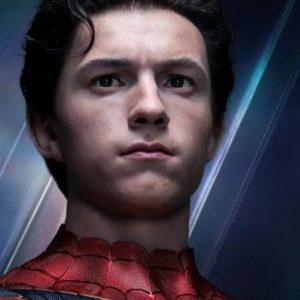The Role of Mentors: How Supportive Figures Shaped Chris Hemsworth’s Hollywood Path
When you think of Chris Hemsworth, images of Thor wielding Mjolnir or a charming Aussie leading major blockbusters immediately come to mind. But behind that chiseled jawline and undeniable star power is a story shaped by the guidance, wisdom, and support of some crucial mentors. From his early days in Australia to Hollywood’s glittering lights, Chris Hemsworth’s rise is a testament to how supportive figures can shape an actor’s journey in the cutthroat world of showbiz.
From Aussie Soaps to Global Stardom: The Early Influences
Before Thor and Avengers dominated the silver screen, Chris was cutting his teeth on Australian television, with memorable roles in shows like Home and Away. As many rising stars can attest, the transition from local TV to international movie stardom can be daunting, but in Chris’s case, he was never on that path alone.
Directors and producers on these early sets played a significant mentoring role, offering Hemsworth more than just acting tips. They imbued him with professionalism and taught him how to navigate the industry’s challenges. An early mentor often cited by industry insiders was director Graeme Wallace, whose work with Hemsworth on smaller projects laid the groundwork for the actor’s nuanced performances.
Hollywood Heavyweights and Behind-the-Scenes Gurus
Once Chris broke onto the Hollywood scene, the stakes—and the scale—were astronomically higher. The Marvel Cinematic Universe, with its global fanbase and immense pressure, might have overwhelmed a lesser actor, but Hemsworth credits several Hollywood veterans for their steady encouragement and behind-the-scenes advice.
Actors like Robert Downey Jr. offered more than just on-screen chemistry; they became informal mentors. Downey’s own journey through the highs and lows of Hollywood became a blueprint for Hemsworth on how to maintain focus, resilience, and humility amid massive fame.
Furthermore, directors like Taika Waititi, who helmed Thor: Ragnarok, helped redefine Chris’s approach to his character by encouraging vulnerability and comedic timing, elevating his role beyond the traditional superhero archetype. Taika’s mentorship not only diversified Hemsworth’s range but also helped him connect more deeply with global audiences.
The Power of Peer Support: Siblings and Friends in the Industry
Mentorship isn’t always about senior figures. Sometimes, it’s the support from peers and family that shapes an actor’s trajectory. Chris Hemsworth’s brothers, Luke and Liam, are actors themselves and have been instrumental in his journey. Their shared experiences and honest advice helped Chris maintain a grounded perspective amid fame’s dizzying heights.
Moreover, personal friendships with industry insiders have provided Chris with a reliable support system. The often isolating nature of Hollywood can be softened when you have trusted confidants who understand the pressures and pitfalls of the business.
Embracing Vulnerability and Growth: Lessons from the Mentorship Journey
Chris Hemsworth’s openness about his struggles with anxiety and the pressures of fame is another crucial part of his story, illustrating that mentorship also means learning from challenges and embracing growth. Supportive figures encouraged him to speak openly, seek balance, and focus on mental well-being.
Mentorship also extended into his forays outside acting—whether it’s philanthropy, fitness, or entrepreneurial ventures—where established mentors in those fields guided Chris in making impactful decisions.
Why Mentorship Still Matters in Hollywood Today
Chris Hemsworth’s story is a shining example of how mentorship can make or break a career in Hollywood. In an industry notorious for fleeting fame and ruthless competition, having mentors offers not just guidance but emotional resilience and strategic insight.
For fans and aspiring actors, understanding the value of supportive networks is key. The Hemsworth journey tells us that behind every megastar is a village of mentors who help shape not only their craft but also their character.
Final Take: Chris Hemsworth’s Journey Fueled by Mentors
From the set of Home and Away to the red carpets of global premieres, Chris Hemsworth’s path was never walked in isolation. Supportive directors, seasoned actors, close family, and insightful filmmakers all played starring roles in his success story.
As fans eagerly await his next big project, it’s worth remembering that the Thor we admire today owes much to those mentors who believed in him, challenged him, and helped him find his true power—both on and off screen.
For those looking to break into Hollywood or simply inspired by Chris’s journey, his story underscores one timeless truth: never underestimate the power of a good mentor.
By koalafriend
Tags: Chris Hemsworth mentors, Hollywood mentorship, Chris Hemsworth career, Thor actors support, Marvel actors mentorship, Hollywood success stories

